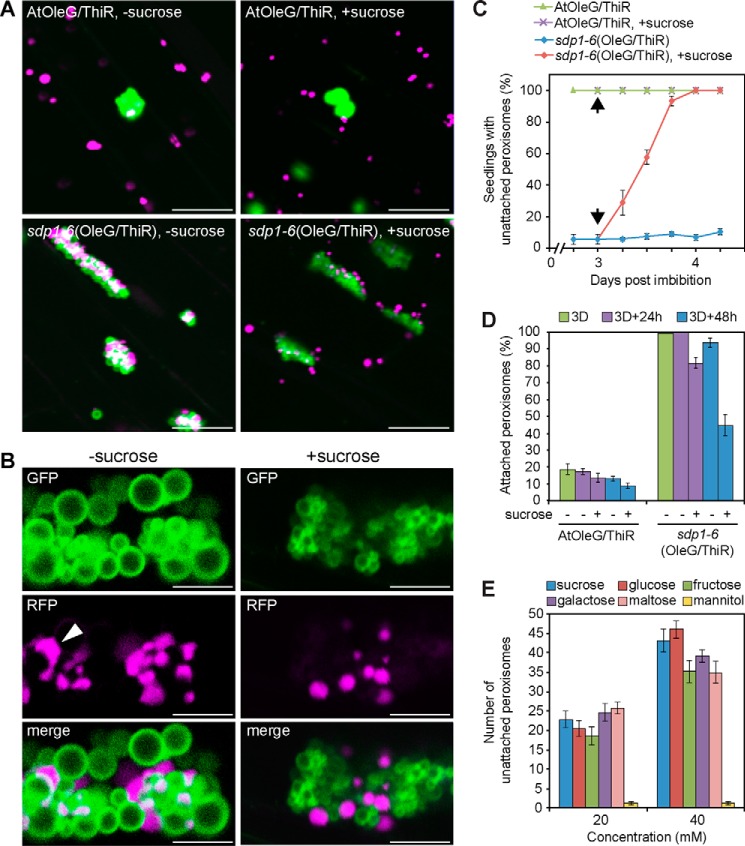FIGURE 2.
The enhanced physical interaction between oil bodies and peroxisomes in the sdp1 mutant was restored by exogenous sucrose application. A, oil bodies (green) and peroxisomes (magenta) were observed in the hypocotyl tissues of 3-day-old wild-type (AtOleG/ThiR) and sdp1–6 (sdp1–6(OleG/ThiR)) seedlings overexpressing OleG and ThiR grown in the absence (left panels) or presence (right panels) of sucrose. Scale bars = 20 μm. B, enlarged images of oil body-peroxisome clusters in sdp1–6(OleG/ThiR) that were grown under the same condition as in A in the absence (left panels) or presence (right panels) of sucrose. The arrowhead indicates an elongated peroxisome. Scale bars = 5 μm. C, quantification of seedlings exhibiting unattached peroxisomes in the hypocotyl. Unattached peroxisomes are represented by the appearance of peroxisomes in the cytosol. AtOleG/ThiR and sdp1–6(OleG/ThiR) seedlings grown in the absence of sucrose for 3 days were transferred to growth medium containing 2% sucrose (arrows) and observed under a microscope at 6-h intervals. Data represent the mean ± S.E. of three biological replicates (n = 60). D, percentage of oil body-attached peroxisomes in AtOleG and sdp1–6(OleG) before and after sucrose induction. The seedlings were grown without sucrose for 3 days (3D) and transferred to growth medium without (−) or with (+) 2% sucrose for 24 and 48 h. Data represent the mean ± S.E. of two biological replicates (n = 15). E, the effect of various sugars on the interaction. Shown is the quantification of peroxisomes that are dispersed in the cytosol from 3-day-old sdp1–6 (OleG/ThiR) seedlings grown on growth medium containing various sugars, including the metabolizable sugars sucrose, glucose, fructose, galactose, and maltose, and an unmetabolizable sugar, mannitol, under dark conditions. Data represents the mean ± S.E. of 20 samples.

